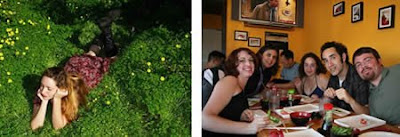Myers Briggs Type Discussion: The Four Functions

This post is continued from the previous article, Myers Briggs Type Discussion: The Four Attitudes . If you haven’t read that yet, you should also give it a look. The Functions There are two kinds of functions in Myers Briggs theory: ones that help you perceive the world around you (the perceiving functions: Intuition or Sensation) and ones that help you make decisions based on the info you have perceived (the judging functions: Thinking or Feeling). The Perceiving Functions: Intuition vs. Sensation The people that have a Perceptive attitude towards life (also called P-types: ISTP, ESFP, INTP, ENFP, etc.) use one of these two functions as extroverted (Ne or Se): this is the way they prefer to deal with their external environment. Extroverted P-types (ExxP) use it as their primary function, and Introverted P-types (IxxP) use it as secondary. The Judging types (J-types: ESTJ, ENTJ, INFJ, ISFJ, etc.) will use one of these functions for dealing with their own inner world, as an in...


